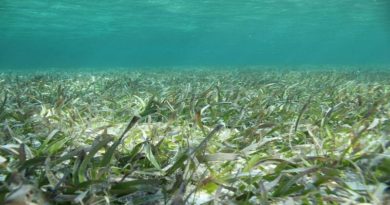Mercury: 74 nations ratify Minamata Convention as it enters into force
Three years and ten months after it was adopted in Kumamoto, Japan to safeguard human and the environment from the adverse effect of mercury pollution, the Minamata Convention on Mercury on Wednesday August 16, 2017 enters into force.
As at 11pm on Tuesday August 15, 2017, 74 countries including developed and developing countries have ratified the Convention while 128 countries have signed it according to information obtained on the website of the Convention.
The Convention was agreed at the fifth session of the Intergovernmental Negotiating Committee on mercury in Geneva, Switzerland on Saturday January 19, 2013 and adopted later that year on October 10, 2013 at a Diplomatic Conference held in Kumamoto, Japan.
The Convention draws attention to a global and ubiquitous metal that, while naturally occurring, has broad uses in everyday objects and is released to the atmosphere, soil and water from a variety of sources.
However, controlling the anthropogenic release of mercury throughout its lifecycle has been a key factor in shaping the obligations under the Convention.
Major highlights of the Minamata Convention include a ban on new mercury mines, the phase-out of existing ones, the phase out and phase down of mercury use in a number of products and processes, control measures on emissions to air and on releases to land and water, and the regulation of the informal sector of artisanal and small-scale gold mining. The Convention also addresses interim storage of mercury and its disposal once it becomes waste, sites contaminated by mercury as well as health issues.
On July 1 this year, a daylong celebration event organised by United Nations Environment, Ministry of Environment, Japan, Kumamoto Prefecture and Minamata City was held in Minamata City to celebrate the entry into force of the Convention that will address the epidemic of a disease that ravaged the city more than 60 years ago and claimed hundreds of lives.
The Minamata disease was as a result of dumping of chemical waste into Minamata city bay by Japan’s most advanced factories upstream. A sludge containing mercury had been consumed by fish and shellfish, and from there had entered into the food chain and the staple, protein-rich diet of the coastal communities. It was several years before the precise cause of the epidemic was identified, but not before hundreds of lives were lost.
The Minamata incident will go down in history as one of the worst-ever industrial disasters, with the town giving its name to the crippling, deadly condition – and therefore associated with disease and death.
Meanwhile, the first Conference of Parties (COP1) to the Convention will take place from 24-29 September, 2017 in Geneva, Switzerland. The conference will oblige governments to reduce mercury use, clean up contamination sites, and ensure health care for victims of mercury poisoning.
The milestone 50 ratifications requirement before it can enter into force was reached on May 18, 2017 leading to its entry into force 90 days after.
Kayode Aboyeji




